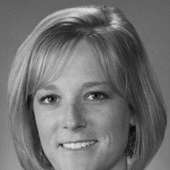- Agricultural educational events to be offered (12/27/12)
- Census of Agriculture provides snapshot of farmers and ranchers across the country every five years (12/6/12)
- Proper care needed to maintain effectiveness (11/15/12)
- Does patch burning offer advantages? (10/4/12)
- Agriculture and 4-H erosion reduction in pastures (9/13/12)
- Southwind 4-Hers get reserve champ honors (9/11/12)
- Educational opportunities available for farmers, ranchers (8/23/12)
Practices to promote daytime calving
Thursday, January 17, 2013
It is generally accepted that adequate supervision at calving has a significant impact on reducing calf mortality. Adequate supervision has been of increasing importance with the use of large beef breeds and cattle with larger birth weights. On most operations, supervision of the first calf heifers will be best accomplished during the daylight hours, with the least supervision in the middle of the night.
The easiest and most practical method of inhibiting nighttime calving at present is by feeding cows at night. The physiological mechanism is unknown, but some hormonal effect may be involved. Rumen motility studies indicate the frequency of rumen contractions falls a few hours before parturition. Intraruminal pressure begins to fall in the last two weeks of gestation, with a more rapid decline during calving. It has been suggested that night feeding causes intraruninal pressure to rise at night and decline in the daytime.
In a Canadian study of 104 Hereford cows, 38.4 percent of a group fed at 8 a.m. and again at 3 p.m. calved during the day, compared to 79.6 percent of a group fed at 11 a.m. and again at 9 p.m.
In field trials by cattleman utilizing night feeding, when 35 cows and heifers were fed once a day between 5 p.m. and 7 p.m., 74.5 percent of the calves were born between 5 a.m. and 5 p.m.
However, the most convincing study involved 15 Iowa farms and 1,331 cows. These cows were fed once daily at dusk, 85 percent of the calves were born between 6 a.m. and 6 p.m.
It seemed to make no apparent difference if the cows were started on night feeding the week before calving or two to three weeks prior.
This year may provide an extra challenge for some producers.
Those who need to stretch the hay supplies as much as possible may choose to limit access to the hay. Limiting the time to four to six hours per day that cows have access to the big round bales (in bale feeders) has been shown to improve hay feeding efficiency.
However, limited access to the hay may be difficult to accomplish with "nighttime feeding."
If the cows are turned in with the hay at dusk, they must be removed from the hay at 10 p.m. to midnight -- in the dark. This is neither easy, nor convenient to accomplish.
Perhaps a better solution would be turn the cows in to the area with the hay bale just before noon and use the protein supplement such as range cubes to coax them into the adjoining pasture at dusk.
This would allow the cows access to the big round bales for about five hours, then they will eat the supplement over the next hour.
The shift to daylight calving may not be as dramatic as would be accomplished with total night time feeding, however, some compromise is necessary in times of limited forage. Be sure to have enough feeder space for all the cows to have access to the hay bales at once.
On large operations with plenty of forage it may be impossible to feed all the cows after 5 p.m. In these situations, it would be best to feed the mature cows earlier and feed the first calf heifers at dusk to ensure there will be observation and assistance available during calving.
Various means have been employed to effectively reduce animal loss at calving. Skilled personnel should be available to provide assistance and neonatal care to maximize the percentage of calf crop weaned. Currently, evening feeding seems to be the most effective way of scheduling partition during the daylight hours, but is not 100 percent effective so skilled personnel are still vital.
NOTE: A Weed Resistance Luncheon has been scheduled for Tuesday, Jan. 22 at the Yeager Building on the Bourbon County Fairgrounds. The program will run from 10 a.m. to 1 p.m. and include lunch provided by AgVenture. Commercial pesticide credits will be available.
Topics to be covered are:
* Weed Resistance: how we got here, what to do now, and where to go from here --Dallas Peterson, K-State Weed Specialist
* Southeast Kansas Agronomy Update -- Doug Shoup, Area Agronomy Specialist
Registration is requested by Jan. 18 by calling the Southwind Extension District -- Fort Scott office at (620) 223-3720.
The Southwind Extension District and Citizen's Bank invite you to attend an Ag Profitability Conference on Feb. 12 in the Allen County Courthouse basement. The event will begin at 9:30 a.m. with registration and conclude at 2:30 p.m.
Speakers and presentations secured are:
* Glynn Tonsor: Profitability Drivers and Global Position Impacts on the U.S. Beef Industry's Future
* Troy Dumler: Crop Profitability Outlook for 2013
* Gordon Dowell: What's Next
* Kevin Herbel: Bringing the Next Generation to the Farm: Do we have what we need to do what we want?
* Bryan Schurle: Land Prices During Periods of Rapid Change
Registration is requested to the Southwind Extension District -- Fort Scott Office by Feb. 5.
Information on night feeding was adapted from a paper by Glenn Selk, extension cattle reproduction specialist at Oklahoma State University.

